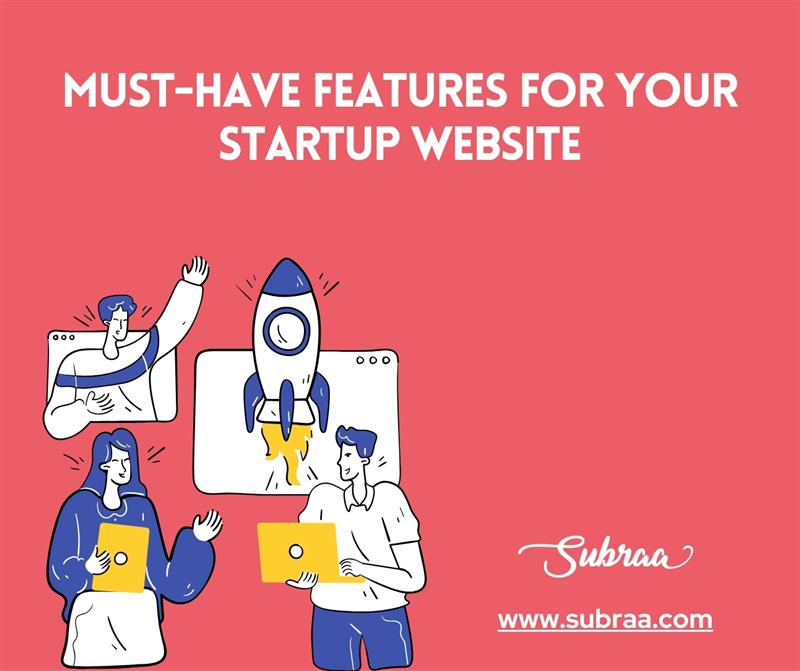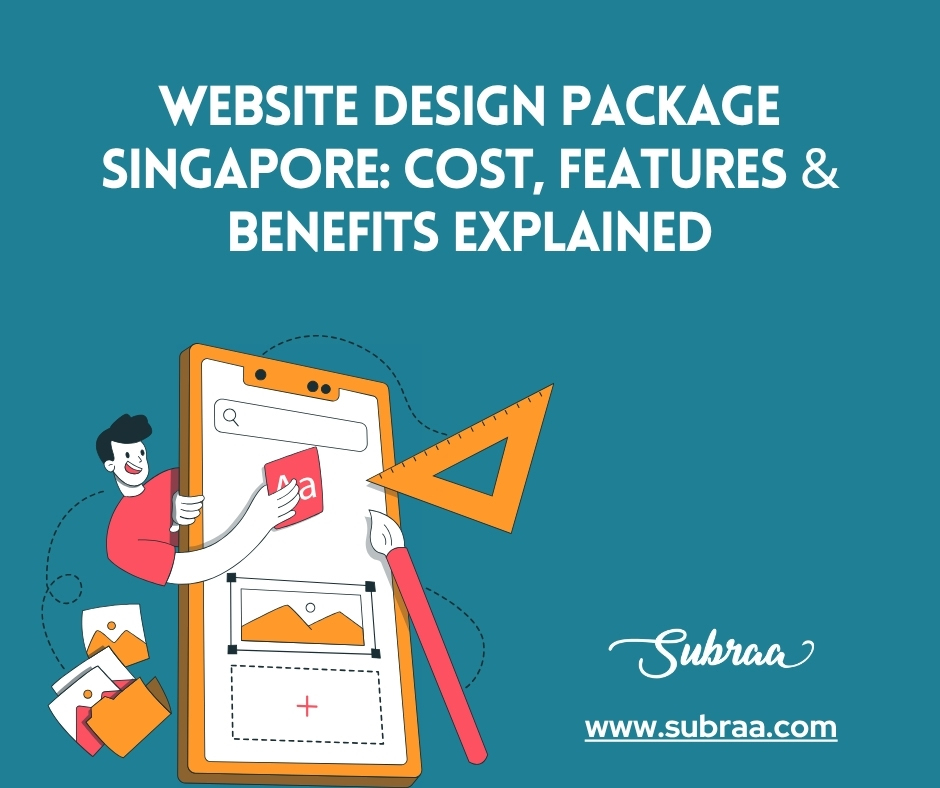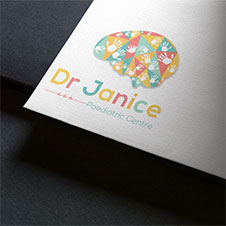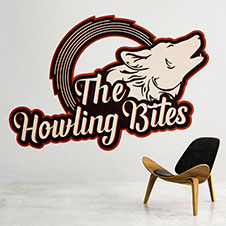Your website isn’t just a “nice-to-have”, it’s your startup’s most valuable real estate. It’s the place where potential clients, investors, partners, and even future employees form their very first impression of your brand. And as the saying goes, you only get one shot at a first impression.
But building a startup website isn’t simply about picking a slick template and adding your logo. It’s about creating functionality, delivering a seamless user experience, building trust, and driving conversions. This is where working with an experienced freelance web designer Singapore can make all the difference. A professional ensures your site is not only visually appealing but also strategically structured to engage visitors.
On the other hand, a poorly designed or outdated website can push users away. For a startup, that could mean lost funding, missed leads, or worse, damaged credibility.
So, what exactly makes a great startup website?
In this blog post, we’ll walk you through the must-have features that every startup website needs to make an impact, attract attention, and drive results. Whether you’re in fintech, e-commerce, SaaS, or any other niche, these essentials will set you up for online success.
Oh, and if you’re looking for a professional web design Singapore company who can deliver all of these (and more) without the agency price tag, stick around, we’ve got a name to share.

Clean, Responsive Design
Before your visitors read a single word on your website, they’ll already have formed an opinion, based entirely on how it looks and loads. This is why a clean, responsive design is the absolute foundation of any high-performing startup website.
First Impressions Are Visual
People judge websites in under 0.05 seconds. If your site looks cluttered, outdated, or unprofessional, they may bounce before even exploring what you offer. A clean design means:
- Minimal clutter
- Ample whitespace
- Clear visual hierarchy
- High-quality, brand-consistent images
- A modern layout that works across all devices
Mobile-First is Non-Negotiable
With over 80% of users in Singapore browsing on mobile devices, your website must be designed for mobile-first responsiveness. That means:
- Fonts that scale correctly on smaller screens
- Tap-friendly buttons and menus
- Responsive images
- No horizontal scrolling
- Fast-loading mobile experience
Google also considers mobile responsiveness a ranking factor, which directly impacts your SEO visibility.
Speed Matters
Aesthetics are important, but speed is crucial. If your site takes more than 3 seconds to load, you could lose up to 53% of your mobile visitors. Clean design also contributes to speed, by eliminating heavy code, oversized images, or unnecessary animations that drag down performance.
Consider tools like:
- Google PageSpeed Insights
- GTmetrix
- Mobile-Friendly Test by Google
…to evaluate your site’s performance.
Design for Clarity, Not Just Creativity
It’s tempting to go for flashy animations and fancy effects, but clarity should always take priority. Visitors should instantly understand:
- Who you are
- What you do
- What they should do next
That’s why working with an experienced freelance web designer in Singapore, like Subraa, can make a world of difference. We know how to strike the right balance between design, usability, and performance for startup success.
Clear Navigation and Structure
You’ve got the sleek design down, great. But if your website visitors can’t find what they’re looking for in a few seconds, they’ll leave. That’s where clear, intuitive navigation comes in. It’s one of the most underestimated yet most critical elements of a high-converting startup website.
Make It Easy to Explore
Startups often try to impress by cramming in too much – pages, tabs, dropdowns, and pop-ups. But the truth is: less is more. Keep your navigation simple, clean, and focused on what your audience needs to see first.
Must-have primary navigation items:
- Home
- About
- Services/Products
- Pricing (if applicable)
- Contact
Other useful additions:
- Blog or Resources
- Portfolio/Case Studies
- Testimonials
The goal? No more than 5–7 top-level menu items. Keep it straightforward and scannable.
Use Logical Structure & Hierarchy
Your site structure should guide the visitor’s journey – whether they’re potential clients, investors, or users. Utilise internal linking, breadcrumbs, and strategic page placement to help users navigate efficiently.
A responsive mobile menu, commonly a hamburger icon is essential. But it shouldn’t just be functional; it should be:
- Easy to tap
- Smooth to open/close
- Display clear navigation labels
Don’t bury essential links behind endless submenus or collapse them into hidden tabs.
Footer Navigation = SEO + UX Win
The footer is often forgotten, but it’s valuable real estate for navigation and trust-building. Include:
- Quick links
- Social media icons
- Business address and contact info
- Privacy policy / terms of use
It not only helps visitors but also boosts SEO by making internal links more accessible to search engines.
Let a Website Designer Structure It Right
Navigation isn’t just about menus, it’s about user flow and conversion paths. A professional web designer Singapore, like Subraa, understands how to create a structure that not only looks good but also guides visitors toward taking action.
About Us Page That Builds Credibility
People don’t just buy products or services. They buy stories, values, and trust. That’s precisely why your ‘About Us’ page is one of the most essential sections on your startup website. It’s where you connect with your audience on a human level, and it’s often where visitors go to decide if you’re the real deal.
Tell Your Startup Story
Every startup has a journey, whether it began in a dorm room, a co-working space, or over coffee with a co-founder. The About Us page is your chance to share:
- How your business idea was born
- The problem you’re solving
- Your mission and vision
It adds authenticity. People want to know there’s a real team behind the product or service they’re considering.
Introduce the Team (Even if It’s Just You)
Showing the faces behind your brand builds trust and relatability. Include:
- Founders’ photos
- Short bios with background or expertise
- Team values or work culture highlights
- Bonus: fun facts or a quirky touch to make it memorable
Even if you’re a solo founder, a professional headshot and a well-written bio can go a long way.
Social proof can elevate your startup’s credibility, especially if you’re new to the scene. Consider adding:
- Awards or recognitions
- Accelerator/incubator participation
- Customer testimonials
- Media features or press coverage
- Key partnerships or collaborations
These elements reassure visitors that others already trust your brand – and they should too.
Keep It Structured and Engaging
Structure your About Us page like a conversation, not a corporate brochure. Use:
- Short paragraphs
- Bold subheadings
- Icons or visuals for milestones
- A strong closing CTA (e.g., “Meet the Team” or “Get in Touch”)
The design should feel clean and approachable. That’s why startups often work with a professional freelance web designer Singapore like Subraa, who knows how to craft a visually engaging layout while keeping the content readable and impactful. Your About Us page isn’t just about you – it’s about building credibility, trust, and connection. Use it to tell your story and show the human side of your brand.
Strong Calls-to-Action (CTAs)
It’s one thing to get people to visit your website, but it’s another to get them to do something while they’re there. That “something” is called a Call-to-Action (CTA), and it’s the engine behind every conversion. Whether you want users to sign up, make a purchase, book a call, or simply contact you, your startup website needs CTAs that are clear, visible, and persuasive.
What Exactly Is a CTA?
A Call-to-Action is a prompt that tells users what to do next. It’s usually in the form of a button or link, like:
- “Get a Free Quote”
- “Book a Demo”
- “Start Free Trial”
- “Download Now”
- “Let’s Talk”
Effective CTAs guide the user journey, ensuring no one clicks around aimlessly.
How to Create High-Converting CTAs
Here’s what separates strong CTAs from weak ones:
- Visibility is everything
Your CTA should be visible above the fold (i.e., without scrolling) and repeated strategically throughout your pages – especially after a value pitch.
- Action-oriented copy
Use power verbs and benefits. For example:
- “Get My Free Proposal”
- “Let’s Build Your Website”
- Color and contrast
Use bold colors that stand out from the rest of your site’s palette. But don’t go overboard, your CTA still needs to look like it belongs.
- Keep the path shortDon’t ask users to fill out 20 fields to request a callback. Simple forms = more conversions.
Examples of CTA Placements That Work
- Top right corner (sticky header)
- Hero section on homepage
- Below every key service section
- Bottom of blog posts
- Dedicated CTA sections with testimonials for social proof
A smart CTA strategy is built into the foundation of good web design Singapore services, especially when working with conversion-focused designers like Subraa.
Don’t Just Use One CTA
Your website should include different CTAs based on where visitors are in their journey:
- Just exploring? ? “Learn More” or “See How It Works”
- Ready to act? ? “Get Started Now”
- Need assurance? ? “Read Client Testimonials”
Each CTA should move them one step closer to becoming a lead or customer.
Contact Information + Lead Capture
So your visitor loves what they see, your design is solid, the content is convincing, and they’re ready to reach out. But then… they can’t find your contact details. Or worse, they find a generic form buried three clicks away. That’s a missed opportunity, and one your startup can’t afford.
An effective startup website should make contacting you effortless. Whether it’s to schedule a meeting, request a quote, or say hello, your website needs a well-placed, user-friendly contact section.
Make Contact Details Easy to Find
Your contact information should be visible on every page, typically in the:
- Top right corner of the header
- Footer section
- Dedicated “Contact Us” page
Include:
- Business phone number (clickable on mobile)
- Email address (ideally a branded one, e.g., [email protected])
- Physical address (if relevant, especially for local SEO)
- Business hours
For startups in Singapore, having local contact info builds credibility and trust quickly, especially for service-based businesses.
Lead Capture Forms That Convert
Beyond displaying contact info, your site should also help capture leads. That means having a short, clear form where visitors can:
- Request a callback
- Get a quote
- Book a consultation
- Subscribe to your newsletter
Best practices for forms:
- Keep it short (name, email, phone, message = ideal)
- Use placeholder text for guidance
- Show a success message or thank-you screen after submission
- Never make users guess what happens next
Avoid lengthy forms unless essential, especially in early-stage startups where every lead counts.
Add Live Chat or Messaging Integration
Startups in fast-paced industries (like tech or home services) can benefit from live chat or WhatsApp integration. Tools like:
- Tawk.to
- Crisp
- Facebook Messenger
- WhatsApp Business
…can offer real-time interaction and increase conversion rates. Just make sure someone’s there to reply – unattended chat boxes are worse than none at all.
Mobile-Friendly Contact Design
On mobile, buttons like “Call Now” or “Message Us” should be tap-friendly and accessible without scrolling forever. If you’re serious about web design Singapore standards, make sure your mobile contact experience is as polished as desktop.
Working with a professional like Subraa ensures all your lead capture elements are fully functional, branded, and optimized for conversions.
Bonus: Add a Map or Appointment Booking
If your business has a physical office or showroom, embedding a Google Map can be helpful. You can also use booking tools like Calendly or TidyCal to let users schedule meetings directly through the site.
Build Your Startup Website with Purpose
Your startup website isn’t just a digital brochure – it’s your 24/7 business representative, your sales engine, and your brand’s first impression. In Singapore’s fast-paced, competitive startup ecosystem, your site mustn’t just look good – it needs to perform, convert, and build trust.
From a clean, responsive design and straightforward navigation to powerful CTAs, lead capture tools, and trust elements, every feature plays a role in creating an experience that moves your visitors toward action. These are not “nice-to-haves” – they’re must-haves.
And while it may be tempting to go the DIY route, investing in professional help ensures that your site is set up for growth, scalability, and success from day one.
Why Startups Trust Subraa for Website Design Singapore
Subraa is a highly experienced freelance web designer Singapore startups rely on for:
- Custom website design tailored to your business goals
- Mobile-responsive and SEO-friendly development
- Clean, conversion-focused layouts
- Scalable solutions that grow with your business
- Affordable Startup Package which covers all the digital needs for a business
Whether you’re just launching or preparing to scale, Subraa ensures your website isn’t just functional but future-ready.
Visit www.subraa.com to request a free consultation.















